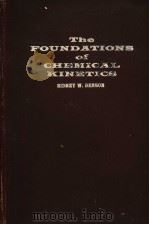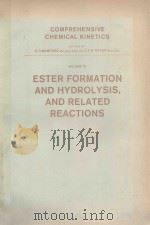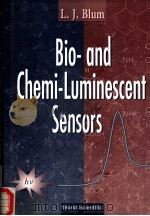《The Foundations of Chemical Kinetics》
| 作者 | 编者 |
|---|---|
| 出版 | 未查询到或未知 |
| 参考页数 | 703 |
| 出版时间 | 没有确切时间的资料 目录预览 |
| ISBN号 | 无 — 求助条款 |
| PDF编号 | 811440038(仅供预览,未存储实际文件) |
| 求助格式 | 扫描PDF(若分多册发行,每次仅能受理1册) |

PART Ⅰ.THE PHENCMENOLOGICAL DESCRIPTION OF CHEMICAL RATE PROCESSES1
Chapter Ⅰ.Description of Reacting Systems3
1.Description of Equilibrium Systems3
2.Description of Kinetic Systems4
3.Phenomenological Approach5
4.Molecular Approach5
5.Macroscopic Variables of a Chemically Reacting System6
5A.Temperature6
5B.Pressure and Volume6
5C.Chemical Composition;Concentration of Reactants6
5D.Chemical Composition;Concentration of Inert Substances7
5E.Chemical Composition;Catalysis7
5F.Effect of Surfaces;Heterogeneous Reactions8
6.Plotting a Course8
Chapter Ⅱ.Mathematical Characterization of Simple Kinetic Systems11
1.Reaction Order11
2.Nomenclature12
3.Zero-order Reactions13
4.First-order Reactions14
5.Second-order Reactions:Type Ⅰ17
6.Second-order Reactions:Type Ⅱ18
7.A Complication of Type Ⅱ Second-order Reactions20
8.Third-order Reactions21
9.Fractional-and Higher-order Reactions25
Chapter Ⅲ.Mathematical Characterization of Complex Kinetic Systems26
1.Classification of Complex Kinetic Systems26
2.Opposing Reactions;First Order27
3.Opposing Reactions;Higher Orders29
4.Concurrent Reactions31
5.Consecutive Reactions;First Order33
6.Infinite Sequence of First-order Reactions36
6A.First-order Reactions;General Treatment39
7.Consecutive Reactions;Higher Order42
7A.Elimination of Time as an Independent Variable43
7B.Reduction of Second-order to First-order Equation46
8.Classification of Consecutive Reaction Systems49
9.The Stationary-state Hypothesis;Chain Reactions50
10.The Induction Period53
11.Higher-order Reactions54
12.Rate-determining Step55
Chapter Ⅳ.Experimental Characterization of Simple Kinetic Systems58
1.Experimental Methods;Composition58
1A.Total Pressure59
1B.Method of Sampling60
1C.Flow Methods61
1D.Optical Methods of Analysis63
1E.Electrical Methods of Analysis64
1F.Miscellaneous Methods of Analysis64
1G.Errors Due to Heterogeneity65
2.Temperature Dependence of Rate Constants;Activation Energies66
3.Thermodynamic Interpretation of the Rate Equation68
3A.Activation Energies and Heats of Reaction71
4.Entropy of Activation72
4A.Relation between Reaction Rates and Free Energies;Rate Close to Equilibrium73
5.Experimental Determination of Reaction Order;Simple Systems75
5A.Method of Integration75
5B.Method of Half-lives77
5C.Method of Isolation;Pseudo-order Reactions81
5D.Differential Method82
5E.Tracer Methods84
6.Precision of Rate Measurements for Simple Systems86
6A.Precision of Specific Rate Constants86
6B.Weighting of Data89
6C.Precision in Measurements of Activation Energies91
6D.Influence of Temperature on Precision92
6E.Summary93
Chapter Ⅴ.Experimental Characterization of Complex Kinetic Systems95
1.Characteristics of Complex Systems95
2.Equilibrium Systems96
3.Concurrent Reactions98
4.Chain Reactions;Detection of Intermediates99
4A.Mirror Techniques100
4B.Spectroscopic Techniques102
4C.Mass Spectroscopy103
4D.Chemical Methods104
4E.Paramagnetic Properties106
4F.Isotopic Exchange108
4G.Photochemical Methods;Quantum Yield109
4H.Photosensitization109
4I.Chemical Sensitization110
4J.The Induction Period111
4K.Inhibition111
4L.Intermittent Activation112
4M.Thermal Methods for Detection of Free Radicals114
5.Resumé115
6.The Molecular Approach116
PART Ⅱ.STATISTICAL METHODS FOR TREATING SYSTEMS OF LARGE NUMBERS OF PARTICLES AT OR NEAR EQUILIBRIUM119
Chapter Ⅵ.Representation of Equilibrium Properties121
1.Description of a System of Discrete Particles121
2.Distribution Functions122
3.Some Simple Distribution Functions123
4.Distributions in More Than One Variable124
5.Moments of a Distribution Function125
6.Some Important Theorems for Distribution Functions127
7.Illustration:Random Walk in One Dimension128
8.The Normal Law of Error130
9.Note:Stirling’s Approximation133
Chapter Ⅶ.The Kinetic Theory of Gases135
1.Molecular Models135
1A.Ideal Gas Model135
1B.Hard Sphere Model135
1C.Hard Sphere Model with Central Attractive Forces136
1D.Symmetrical Molecule with Central Forces136
1E.Rectangular Well Model136
2.Velocity Distribution of an Ideal Gas;Cartesian Coordinates137
3.Velocity Distribution in Spherical Coordinates139
4.Velocity Groups142
5.Translational Energy Distributions143
6.Pressure Exerted by an Ideal Gas;Collisions with a Wall144
7.Absolute Temperature:Relation to Thermedynamics147
8.Molecular Collisions148
8A.Mechanics of a Collision149
8B.Collision Frequency of a Single Molecule Moving through a Station-ary Gas150
8C.Collision Frequency of a Molecule Moving through a Homogeneous Gas151
8D.Collision Frequency of a Molecule in a Maxwellian Gas152
8E.Collision Frequency between Maxwellian Molecules153
8F.Bimolecular Collision Frequencies154
8G.Duration of a Collision155
8H.Termolecular Collisions;Collision Complexes156
9.Distribution of Free Paths157
10.Molecular Effusion;Isotope Separation158
11.Energy Transfer in Collisions161
11A.Translational Exchange161
11B.Inelastic Collisions162
11C.Vibrational Exchange163
Chapter Ⅷ.Transport Properties of Gases168
1.Mechanism of Transport168
1A.Transport of Momentum168
1B.Transport of Energy169
1C.Transport of Matter169
2.Viscosity of a Fluid169
3.Viscosity of a Dilute Gas170
4.Comparison with Experiment174
5.Viscosity at Low Densities176
6.Thermal Conductivity177
7.Thermal Conductivity at Low Pressures179
8.Mass Diffusion181
9.Experimental Results for Diffusion184
10.Generalized Diffusion;Thermal Diffusion186
11.Criticism of the Nonequilibrium Kinetic Theory188
Chapter Ⅸ.Statistical Treatment of Interacting Systems190
1.The Canonical Distribution190
2.The Phase Integral191
3.Application to Gases193
4.Molecular Distribution Functions:Ideal Gas in a Force Field195
5.Virial Theorem197
6.Quantum Statistics201
7.Partition Functions201
8.Translational Partition Function202
9.Vibrational Partition Function203
10.Rotational Partition Function204
11.Equilibrium Constant205
12.An Example:The Dissociation of Iodine206
13.Application to Rate Processes207
PART Ⅲ.THE KINETICS OF HOMOGENEOUS REACTION IN GASES209
Chapter Ⅹ.Spontaneous Decomposition of Excited Molecules211
1.Chemical Stability and Temperature211
2.Mechanical Stability of Molecules212
3.Spontaneous Decomposition of an Energized Molecule;Potential Energy214
4.Rate of Spontaneous Decomposition216
5.Quantitative Theories of Spontaneous Decomposition218
6.Detailed Theory of Spontaneous Decomposition219
7.Distribution Function for Energized Molecules222
Chapter Ⅺ.Unimolecular Reactions225
1.Detailed Scheme for a Unimolecular Reaction:Isomerization225
2.Pressure Dependence of Unimolecular Reactions;High-pressure Limit228
3.Pressure Dependence of Unimolecular Reactions;Moderate Pressures230
4.Pressure Dependence of Unimolecular Reaction;Low-pressure Limit234
5.Detailed Scheme for Unimolecular Decompositions239
6.Quantum Effects in Unimotecular Reactions242
7.Equilibrium Theory of Reaction Rates;The Transition-state Method247
8.Summary of the Various Theories of Unimolecular Reactions250
9.Some Unimolecular Isomerizations252
10.Some Unimolecular Fission Reactions;Decomposition into Stable Molecules257
11.Some Unimolecular Fissions;Production of Free Radicals261
12.Unimolecular Reactions;Resumé264
Chapter Ⅻ.Bimolecular and Termolecular Reactions267
1.Association Reactions267
2.Exchange Reactions268
3.Collision Model for Bimolecular Reactions271
4.Transition-state Model274
5.Comparison of Different Theories of Bimolecular Rate Constants;Experi-mental Activation Energies275
6.The Preexponential Factors of Bimolecular Reactions276
7.A Priori Calculation of Preexponential Factors of Bimolecular Reactions281
8.The Reaction H+H2?H2+H(Exchange)282
9.The Reaction H2+I2→2HI285
10.Reactions of CH3 Radicals and H Atoms286
11.Estimations of Preexponential Factors from Calculated Equilibrium Con-stants and Experimental Rate Constants288
12.Bimolecular Exchange Reactions between Molecules290
13.Bimolecular Exchange Reactions That Involve Free Radicals or Atoms292
14.Bimolecular Association Reactions299
15.Termolecular Reactions:Mechanism305
16.Some Third-order Reactions308
17.Rates of Activation313
18.Activation Energies for Simple Kinetic Processes316
Chapter ⅩⅢ.Some Complex Gas-phase Reactions319
1.Complexity of Gas-phase Reactions319
2.The Reaction System H2+Br2?2HBr320
3.Some Omitted Reactions in the H2+Br2 System322
4.The System H2+Br2;Photolysis and Wall Effects325
5.Summary of the Chain Reaction H2+Br2→2HBr329
6.Two-center Chain Reaction:Chain Lengths and Induction Periods331
7.Reactions of H2 witn the Halogens337
8.Reactions of CH4 with the Halogens343
9.The Pyrolysis of Hydrocarbons;The Rice-Herzfeld Mechanisms;Decom-position of Butanes343
10.Pyrolysis of Ethane349
11.Pyrolysis of Ethane:Some Further Steps in the Chain359
12.Pyrolysis of Di-tertiary Butyl Peroxide;A Thermal Source of Methyl Radicals363
13.Photolysis of Acetone:A Photochemical Source of Methyl Radicals370
14.Pyrolysis of Acetaldehyde379
15.Pyrolysis of Dimethyl Ether386
16.Hot Radical Reactions:The Transfer of Energy392
17.Hot Radical Reactions:Photolysis of Iodides396
18.Decomposition of Ozone400
19.Oxides of Nitrogen:Decomposition of N2O6408
20.Pyrolysis of Nitrites and Nitrates419
Chapter ⅩⅣ.The Kinetic Behavior of Non-stationary-state Systems425
1.The Approach to the Stationary State in a Reacting System425
2.Temperature Gradients in Reacting Systems427
3.Thermal Explosions431
4.Chemically Sensitized Explosions;Branching Chains438
5.The Branching Ghain Explosion;Upper and Lower Limits440
6.Concentration Gradients in Chemical Reactions446
7.The Reaction of Hydrogen with Oxygen452
8.The Reaction of CO with O2459
9.Ignition and Combustion461
10.Stationary Flames464
11.Shock Waves and Detonations471
12.The Combustion of Hydrocarbons479
PART Ⅳ.REACTIONS IN CONDENSED PHASES491
Chapter ⅩⅤ.Physical Models for Solution Reactions493
1.A Model for Chemical Reactions in Solution493
2.Collisions in a Solution494
3.Transition-state Model for Solution Reactions502
4.The Effect of Solvent504
5.Changes in External Variables;Pressure Effects510
6.Interactions between Charged Particles in a Solution518
7.Activity Coefficients in Ionic Solutions521
8.The Effect of Ionic Strength on Reactions between Ions525
9.Association of Ions523
10.Effect of Solvent on Reactions of Ions531
11.Reactions of Ions with Polar Molecules534
12.Entropy Changes in Ionic Reactions537
13.Cage Effects in Liquid Reactions541
Chapter ⅩⅥ.Further Kinetic As pects of Solution Reactions548
1.Displacement Reactions548
2.Acid-Base Catalysis558
3.The Br?nsted Relation:Linear Free Energy Relations564
4.Some Acid-Base-catalyzed Reactions of the Carbonyl Group569
5.Reactions in Concentrated Solutions;The Acidity Function575
6.Lewis Acids:Addition to MultipleBonds581
7.Electron-transfer Reactions:Oxidation and Reduction587
8.Intermediate Valence States in Oxidation-Reduction Reactions592
9.Ion-Radical Reactions;Decomposition of Peroxide596
10.Free Radical Polymerization599
11.Absolute Rate Constants inPolymerization605
12.Structure andReactivity611
Chapter ⅩⅦ.Heterogeneous Reactions616
1.Catalysis bySolids616
2.Initiation of Chains at Solid Surfaces618
3.Chemisorption at Solid Surfaces621
4.The Mechanisms of Reactions at Solid Surfaces627
5.Inhibition and Competitionin Surface Reactions630
6.Some Catalytic Reactions Involving H2 and Metals634
7.Oxidation of Metals;Rates of Chemisorption639
8.Electrode Reactions642
9.Phase Formation648
10.Enzyme-catalyzed Reactions652
Appendix A.Some Atomic Constants659
B.Some Useful Mathematical Relations660
C.Some Thermodynamic Data for Atoms,Molecules,and Free Rad-icals in the Gas Phase662
D.The Estimation of Thermodynamic Properties for Simple Molecules in the Ideal Gas State665
E.ApproximateBond Dissociation Energies of Organic Compounds670
Selected Problems673
Author Index681
Subject Index691
《The Foundations of Chemical Kinetics》由于是年代较久的资料都绝版了,几乎不可能购买到实物。如果大家为了学习确实需要,可向博主求助其电子版PDF文件。对合法合规的求助,我会当即受理并将下载地址发送给你。
高度相关资料
-

- COMPREHEHSIVE CHEMICAL KINETICS
- 1984 ELSEVIER AMSTERDAM-OXFORD-NEW YORK-TOKYO
-

- CHEMICAL KINETICS VOLUME 10
- C.F.H.TIPPER"
-

- FOUNDATIONS OF CHEMICAL ANALYSIS
- 1979 ELLIS HORWOOD LTD
-

- THE CHEMICAL FOUNDATIONS OF MOLECULAR BIOLOGY
- 1960 D.VAN NOSTRAND COMPANY INC
-

- PROBLEMS IN CHEMICAL KINETICS
- 1981 MIR PUBLISHERS
-

- Comprehensive chemical kinetics
- 1996 Elsevier
-

- PHARMACEUTICS
- 1983 SWEDISH PHARMACEUTICAL PRESS STOCKHOLM
-

- THE KINETICS OF CHEMICAL CHANGE
- 1940 OXFORD AT THE CLARENDON PRESS
-

- CONTRIBUTIONS TO THE THEORY OF CHEMICAL KINETICS
- 1959 KOBENHAVN
-

- TABLES OF CHEMICAL KINETICS HOMOGENEOUS REACTIONS
- 1951 CIRCULAR OF THE NATIONAL BUREAU OF STANDARDS 510
-

- PRINCIPLES OF CHEMICAL KINETICS
- 1997 WM.C.BROWN PUBLISHERS
-

- BIO-AND CHEMI-LUMINESCENT SENSORS
- 1997 WORLD SCIENTIFIC
-

- THE FOUNDATIONS OF CHEMICAL KINETICS
- 1979 MIR PUBLISHERS . MOSCOW
提示:百度云已更名为百度网盘(百度盘),天翼云盘、微盘下载地址……暂未提供。➥ PDF文字可复制化或转WORD

